I have been a war gamer for many years and played several different rule
sets. Throughout my gaming experience one question always arises, “how
should I base my troops?".
A couple years ago I discovered the Black Powder rules and decided to
venture into the American War of Independence (AWI) to start. This was a
new period to me and did not seem to require as many troops as some other
periods like the American Civil War, so I decided to give 25/28mm figures a
try.
At the time Warlord did not produce AWI figures, but did offer Perry plastics.
I purchased a box to get started.
A close gaming friend who already had a huge
collection of AWI found out what I was doing and offered to sell me a fairly large
collection of metal figures he had extra laying in a drawer.
I took him up on the offer and have since
added a variety of Perry and some War Games Factory (Which Warlord now carries)
to round out my collection.
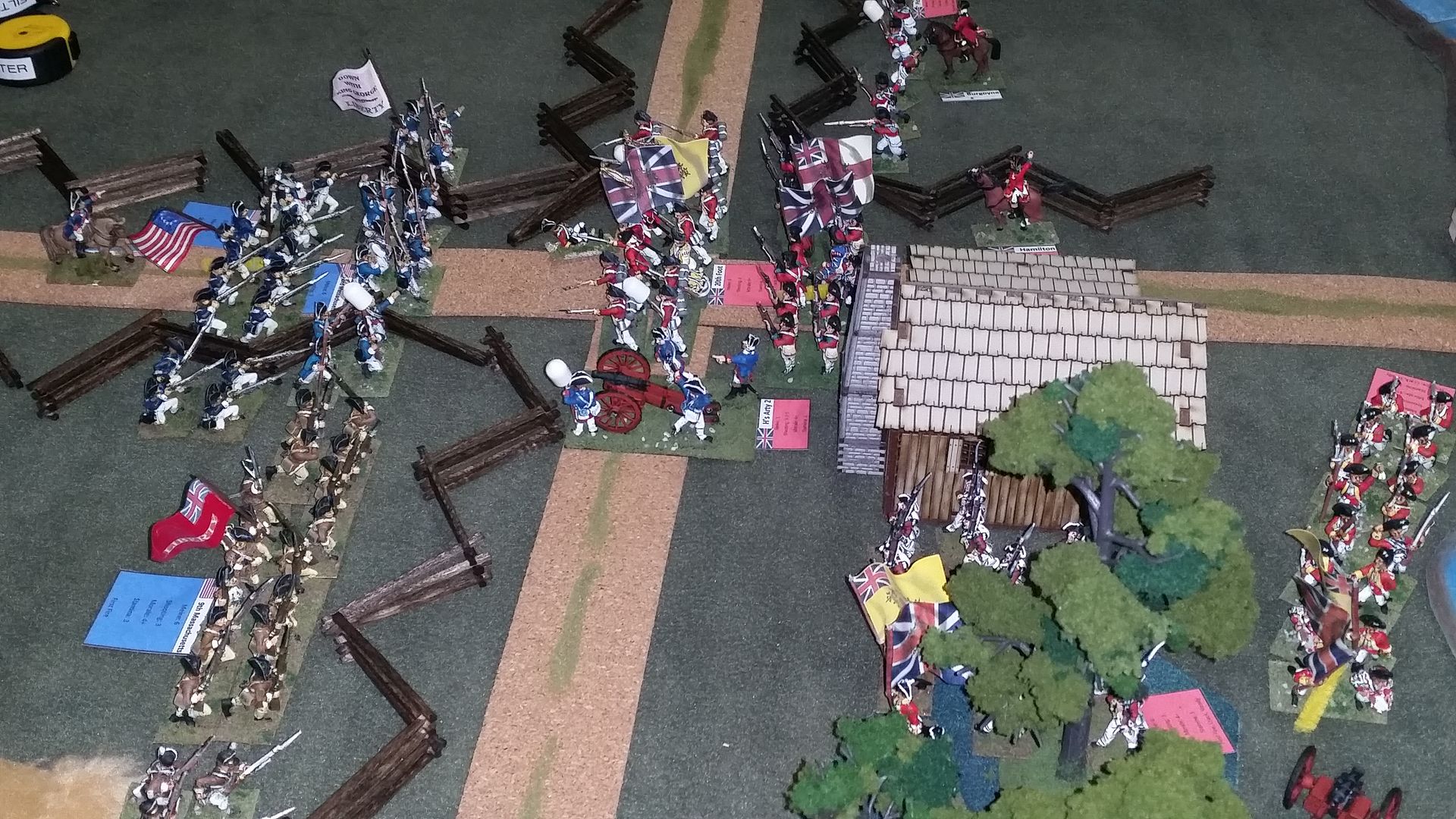 |
| AWI Troops in Action |
Unlike some other rules systems, Black Powder does not specify how many
figures are required to make up a unit or the size of the base, although it
does offer some suggestions in the main rule book. Also a unique thing
about Black Powder compared to other rules systems is that when a unit takes
casualties, you do not remove figures or bases. Black Powder simply
defines units in four arbitrary categories of large, standard, small, and tiny.
In any particular game/scenario a unit will never change size no matter how
many times it takes casualties.
This
mechanic is dealt with through morale. As a result, you could play Black
Powder with colored blocks of wood, but that would not be much fun for us
miniature war gamers who enjoy maneuvering well painted figures on the table.
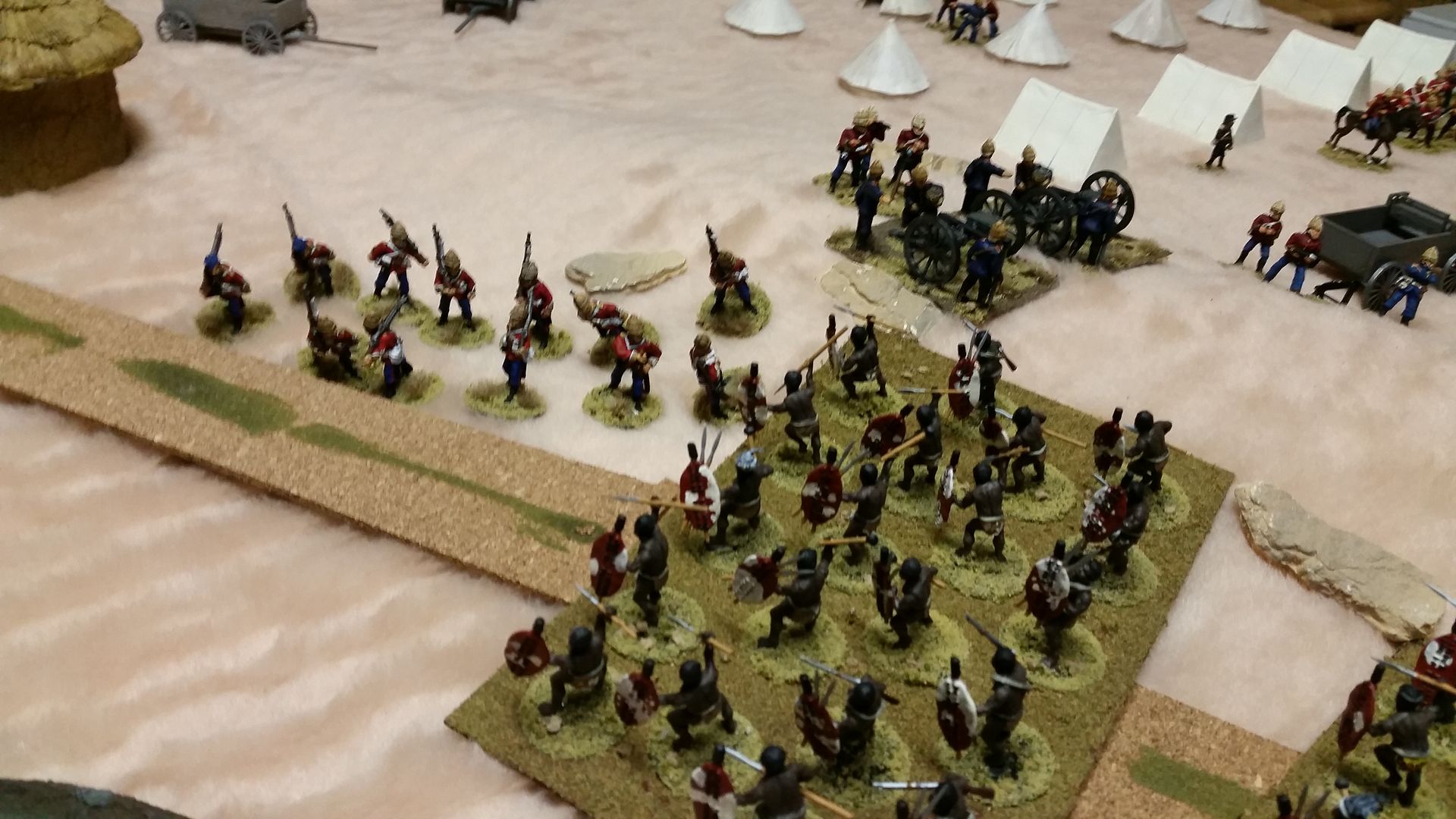 |
| Zulu attack British camp |
As mentioned, Black Powder does give some suggestions (found on page 10 of
the rule book) for how many figures they would use in the various size
units. These numbers roughly correspond to the amount of figures that
come in a full box of plastic 28mm troops sold by various companies.
In the end, basing is a personal choice, and because Black Powder is so
flexible there is not a hard and fast standard you have to follow.
If you are building both armies for a
conflict it is completely a matter of personal choice as to how big you want
your units.
If you and a friend are
modeling opposing forces, you will want to agree to a basing structure.
If you plan to play as part of a larger group
or club, you will want to consult them and conform to the format they have
adopted so your armies look similar.
The key is figure out how much gaming space you will have and what you or
your group wants to do so all armies are based in a similar fashion..
Below is how we decided to base for the periods we currently play.
American War of Independence
Because my initial collection was somewhat limited to start and we knew that
our gaming space would be a slightly smaller than some of the table sizes
recommended in the book we decided to make our units slightly smaller. This way could play on a slightly smaller
table. This also allowed us to stretch
our troops a bit and start playing sooner.
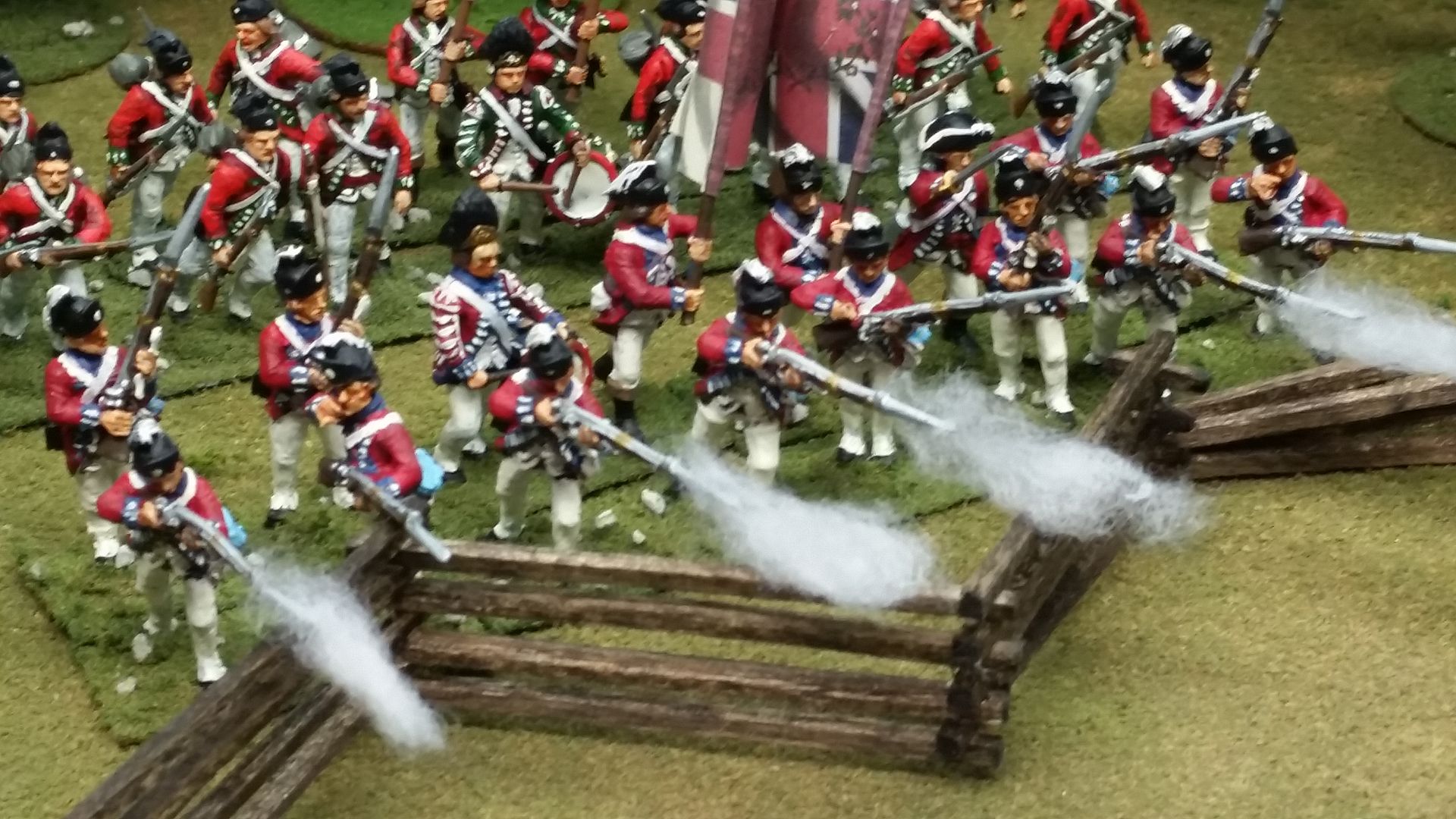 |
| Perry Metal(Front) and Plastic (Back) |
As a result we decided on the following figure counts per unit size:
Large-20
Standard-16
Small-12
Tiny-8
 |
| Perry British Howitzer with Old Glory Limber |
Black Powder also recommends that you mount your figures 4-6 per base.
Here again we deviated. Because I was new to the Black Powder, I wanted
the flexibility to use my figures with another rule system I was more familiar
with that does remove figures as casualties.
Because of this we split our bases in half and mounted 2 figures on a
1.5" x .75" base. A standard infantry unit has 8 bases or 16
figures which yields a 6" frontage when in line formation.
Coincidentally when the AWI supplement "Rebellion" came out the
author suggested that a 6" frontage seemed to work best in AWI battles, so
our formula and basing size worked well.
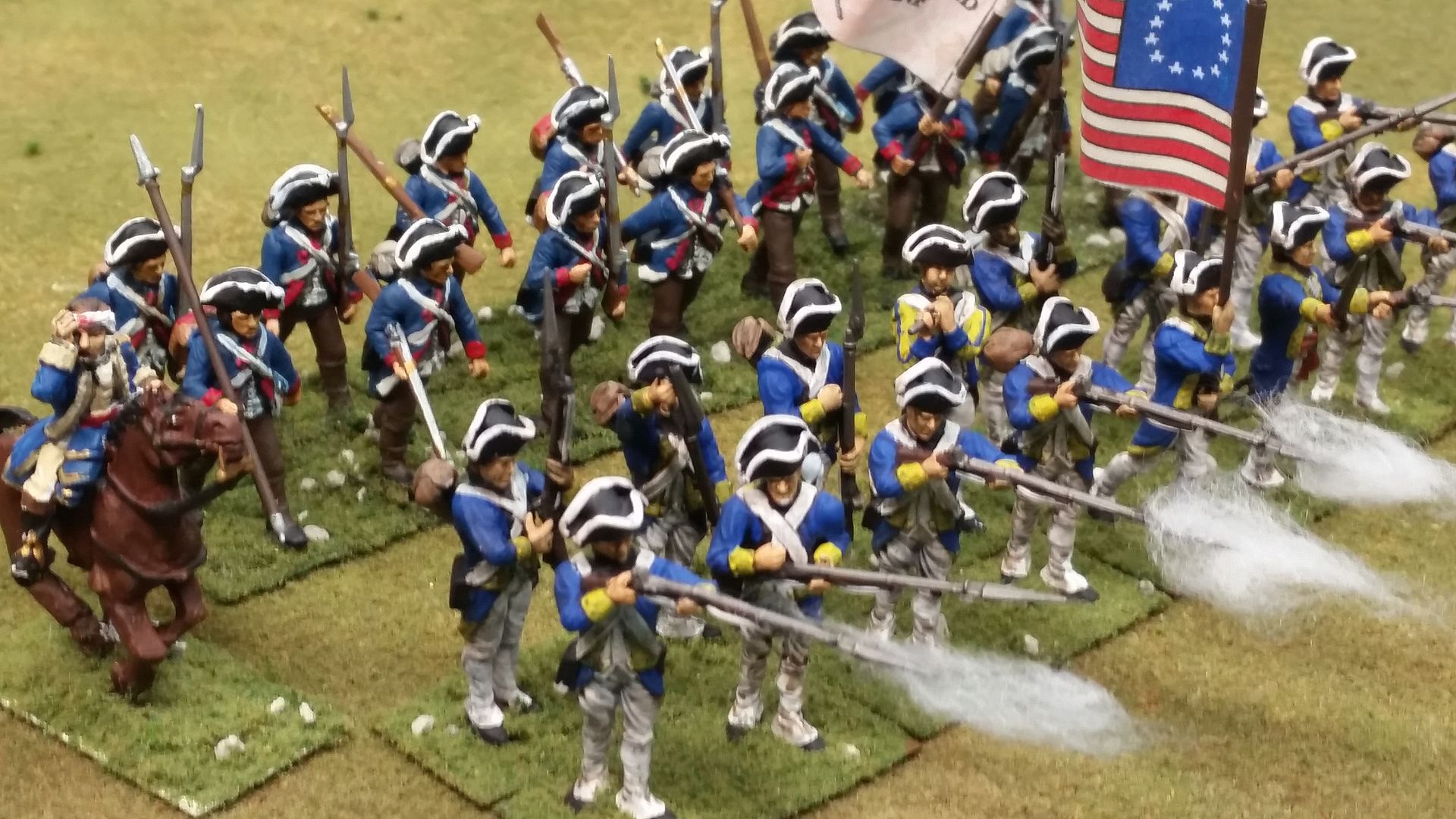 |
| American Line War Games Factory (Front) and Perry Plastic (Back) |
Cavalry do not play a huge role in AWI, but we do have a few and simply
mounted one figure to a base and use 6-8 for a standard unit. Artillery
are based on a 2"x3" base with 4 crew.
 |
| British Dragoons |
Additionally, for units that are typically in skirmish formation we mounted
a number of figures on individual .75" x .75" bases as skirmishers
tend to maintain a loose formation. By using the .75" bases they can
be added to other units.
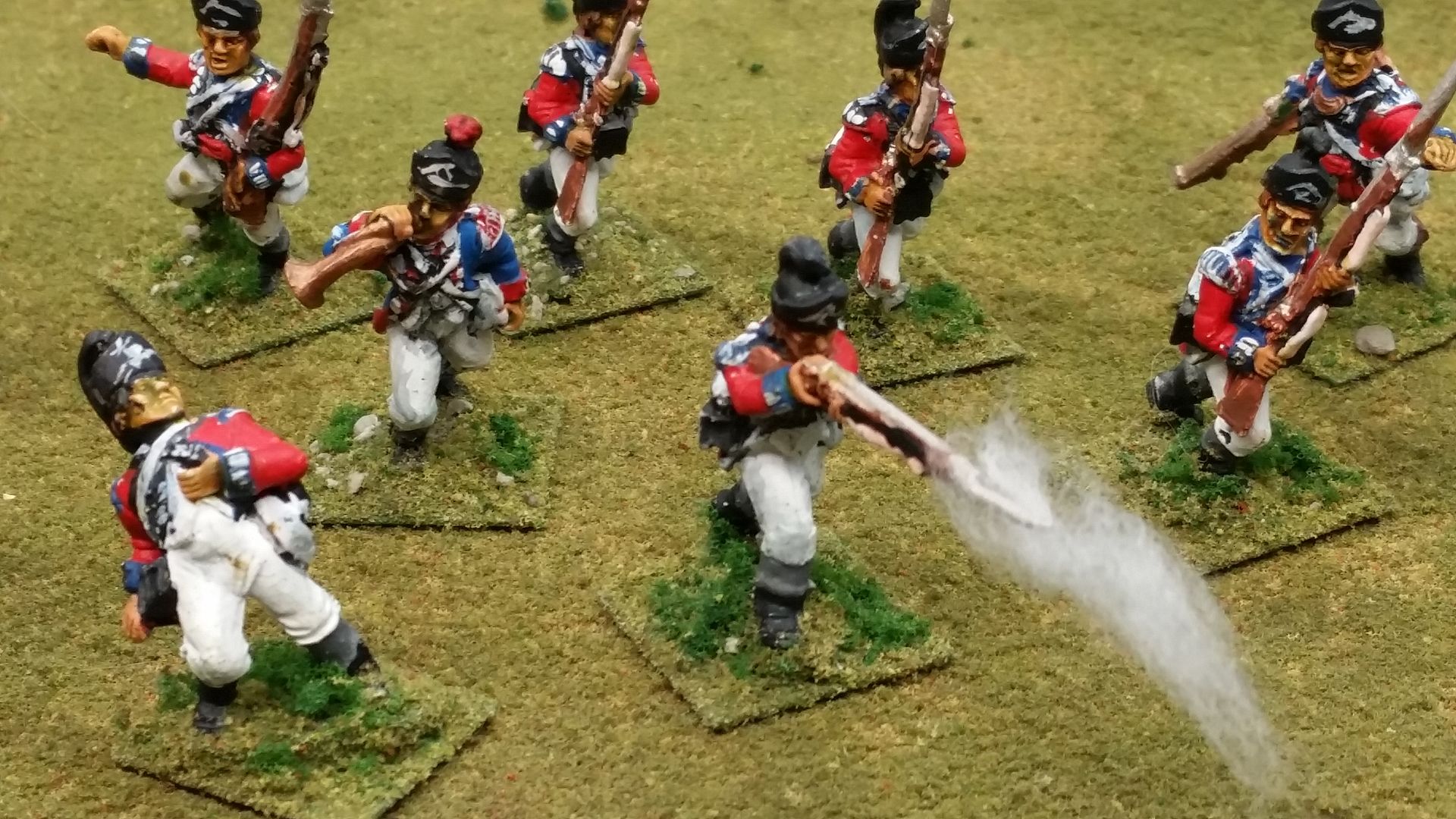 |
| British Skirmishers |
Finally, some may think that by doing this we now have to move twice as many
stands around when moving a unit in battle. This is true, but we
developed a simple fix. For larger engagements we have strips of magnetic
sheeting cut for each unit. In AWI units typically only use line or march
column so it is very easy to keep track of formations and the units fit on the
magnetic strips either way. This also allows us to combine a group of
skirmishers into a single unit is needed.
 |
| Hessians on the march |
Because we enjoy Black Powder and our collections have expanded to a healthy
size, if I had to do it again I would probably opt to just mount 4 figured on
1.5” square bases as the rule book recommends.
As it is in our system basically 2 of our stands equal 1 stand if we had
simple use 1.5" square bases.
This
gives me the flexibility to play the other rules, but I have yet to do so as
Black Powder has proven to be our rule set of choice.
Anglo-Zulu War
This year we decided to take on a new project the Anglo-Zulu War
(AZW) of 1879. Due to the scale we decided to approach our basing a
bit different than we did for AWI. In AZW the Zulu had very large
units (hordes) in loose formations that Black Powder calls War Bands. In
Comparison the British units are fairly small, but much more effective.
In historical writings the British are sometimes
referred to as the "thin red line"
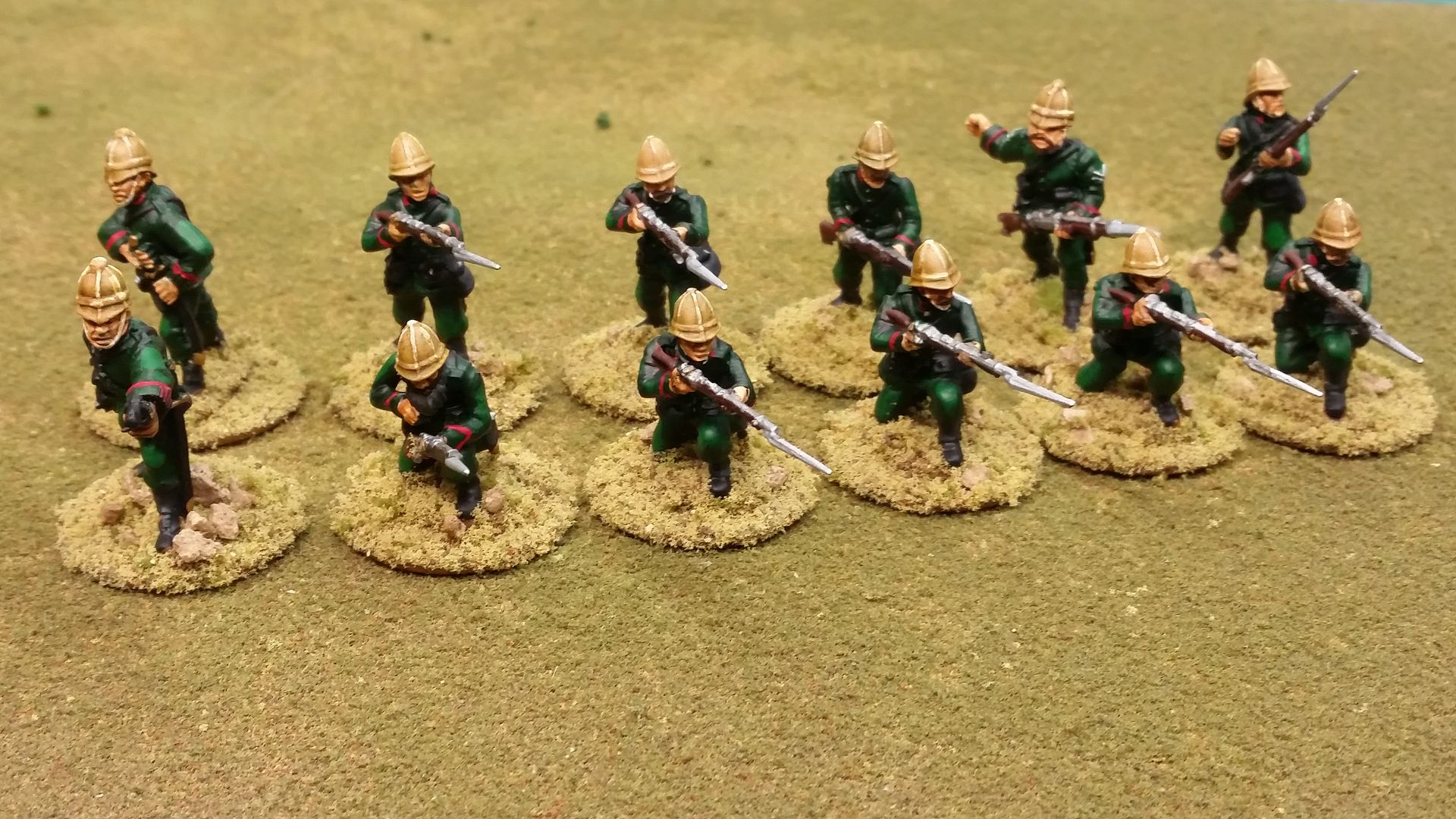 |
| 60th Foot Form Line |
Instead of mounting multiple figures on a base we decided to base all our figures
on 1" metal washers. Again, because of space we decided to make our
units slightly smaller than the book recommends. When modeling the Zulu
we simply decided that all units will be 20 figures. In all but a
few scenarios the British units are standard size, so we decided on 12 figure
per unit works well.
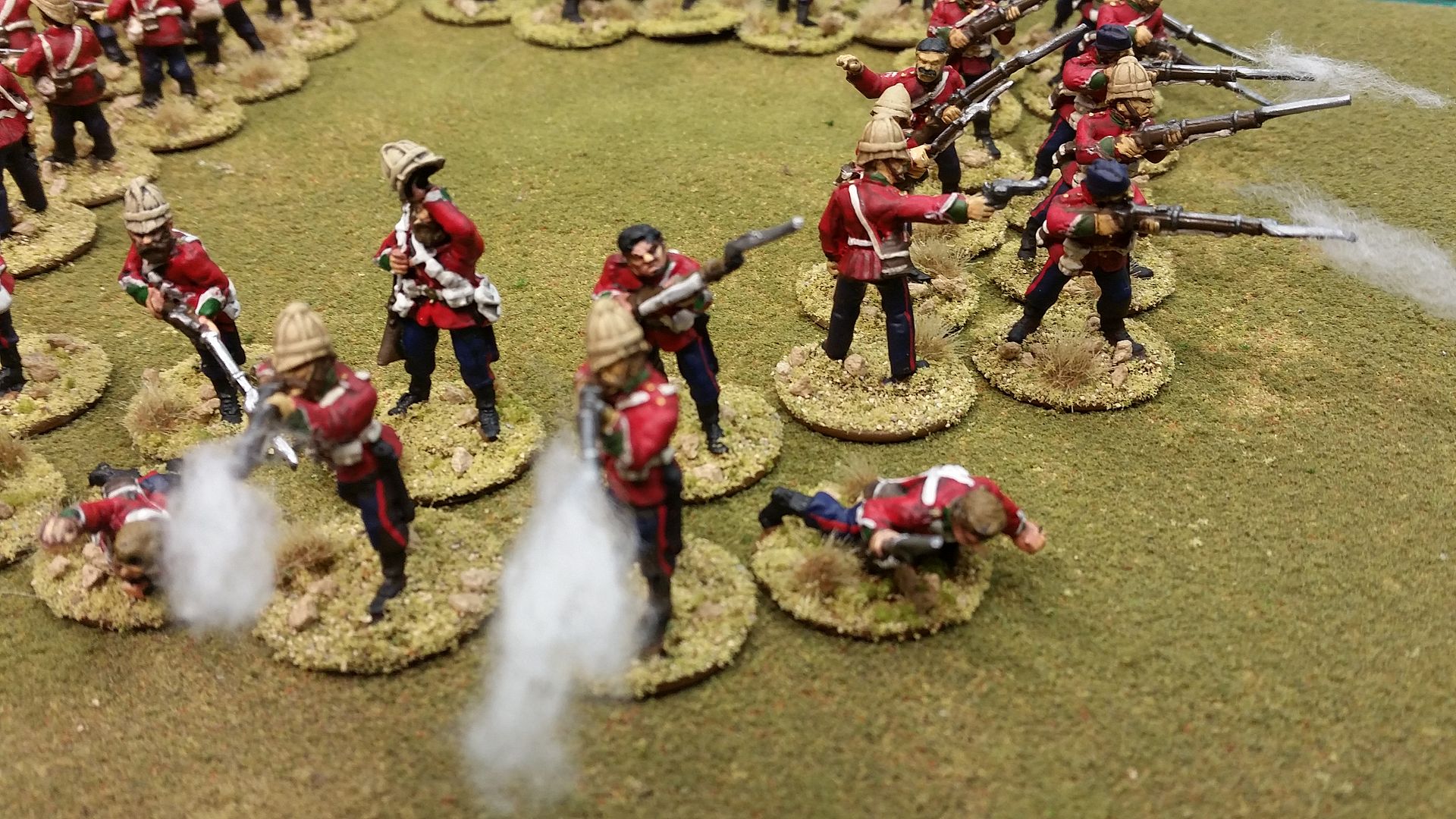 |
| 24th Foot Form Square |
Moving 12 figures for the British who tend to be stationary and fighting a defensive
battle in many AZW scenarios is very manageable. The Zulu with 20 figures
per units was another story. Instead of mounting multiple figures to
larger bases we decided on a single custom movement tray per unit.
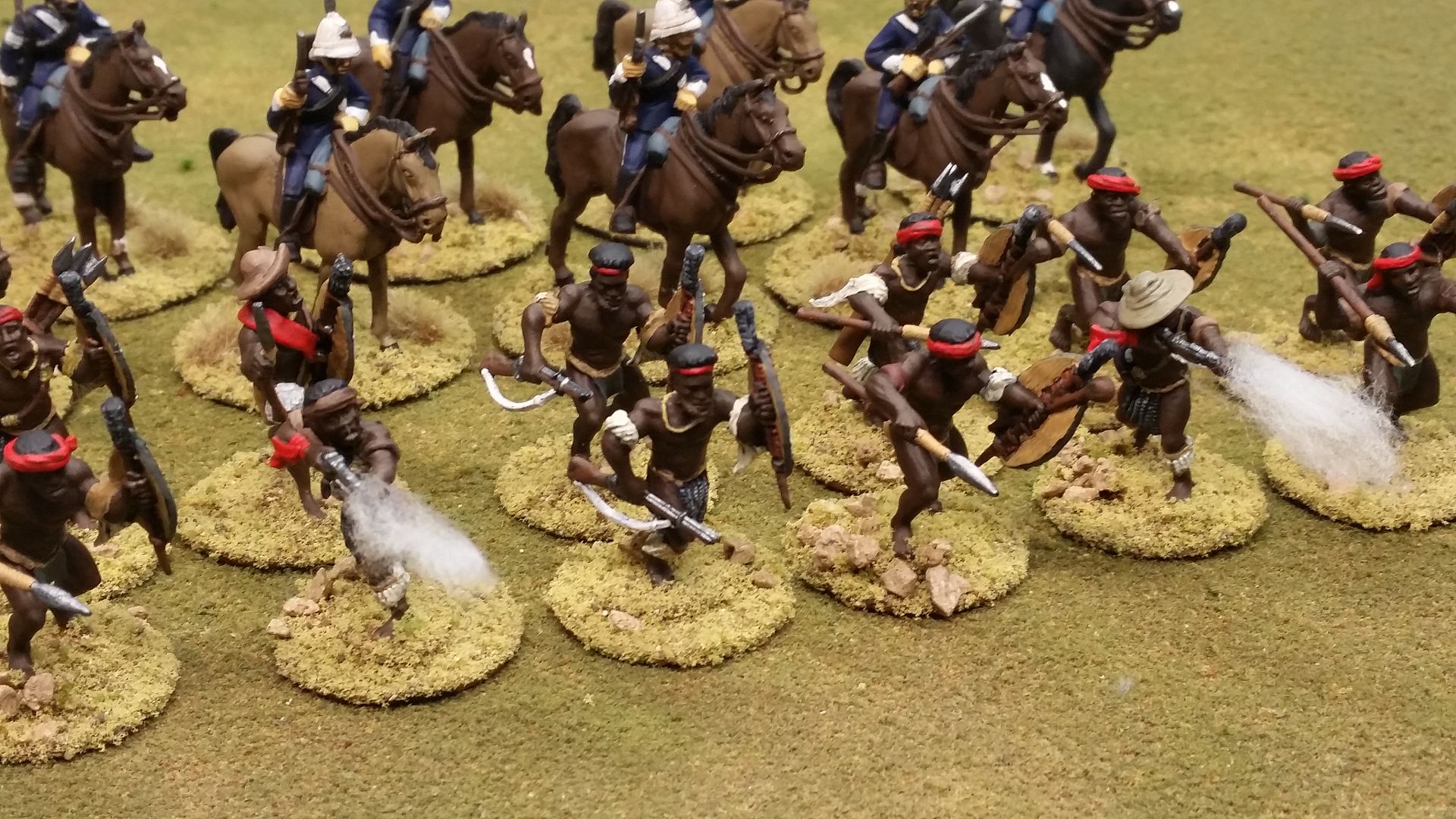 |
| Native Natal and Mounted Carbineers |
The trays are drilled out plastic card (Styrene) with a magnetic sheet
underneath. For the most part the figures snap in easily and the magnetic
sheet holds them in place. This is also nice in that the Zulu player only
handles the base/tray and does not have to touch the figures which can be a bit
delicate especially with the shields and spears.
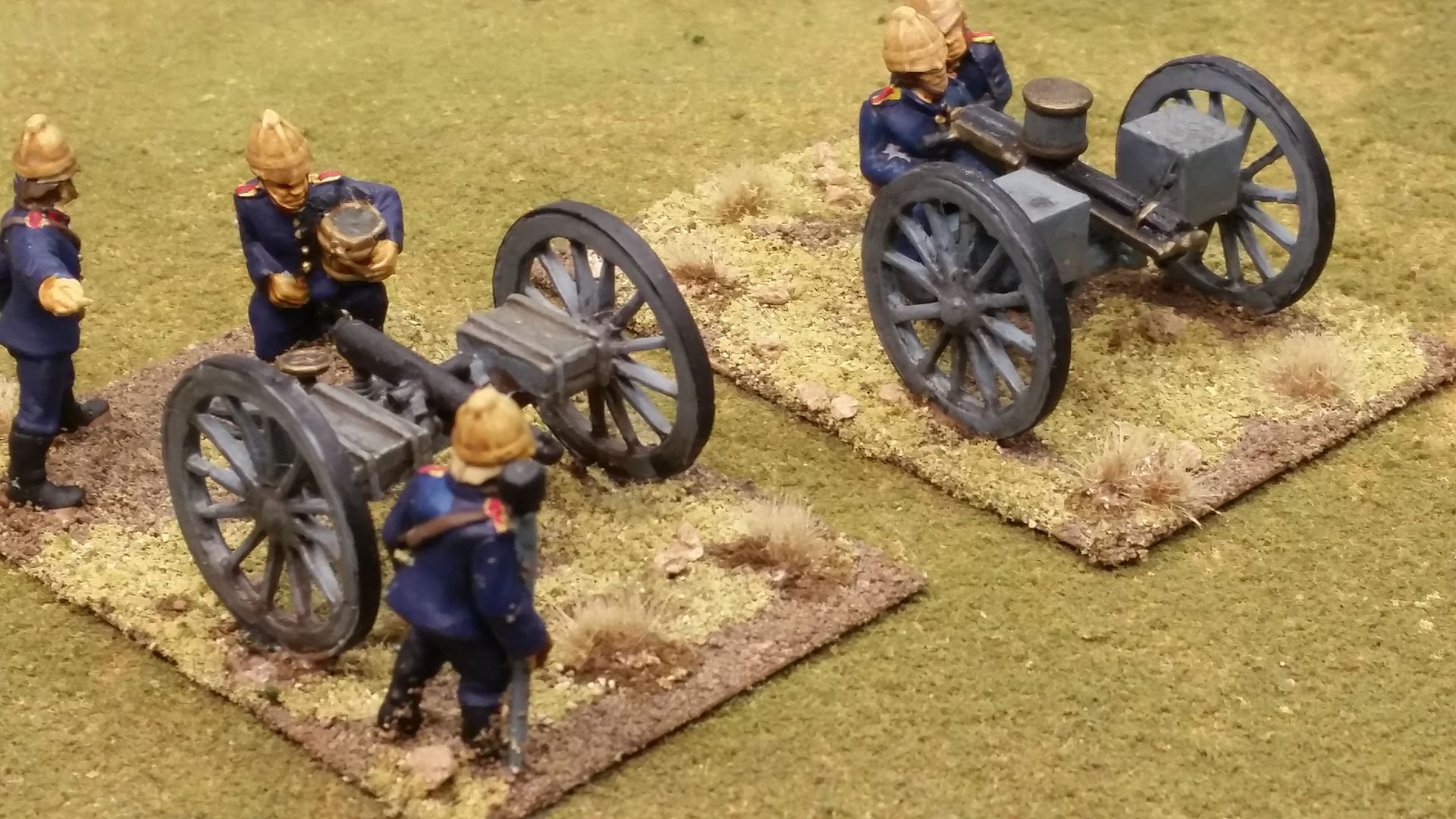 |
| 7lb Artillery and Gatlin Gun |
The “Zulu” supplement does not dwell on unit size, and only suggests that
the British and Zulu units’ frontage be roughly the same size.
As a result I made the trays 8” wide as a
British unit in double line presents roughly an 8” frontage.
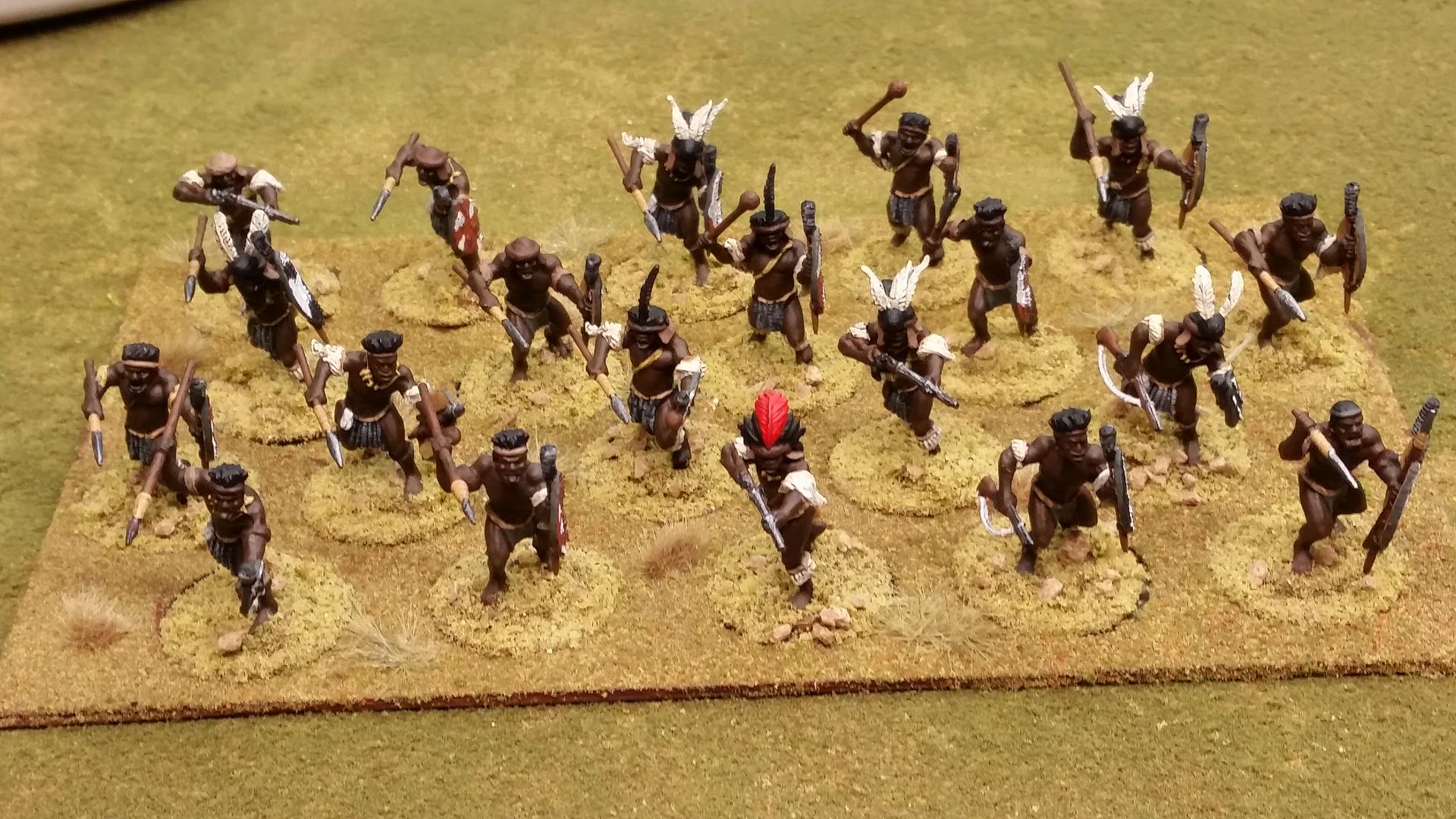 |
| Warlord Unmarried Zulu in movement tray |
We have only played a handful of games so far and are getting ready to run
our first large scale Demo and a convention (Battle of Isandlwana) and we are
extremely happy with the results thus far.
 |
| Zulu Horde massing for action |
American Civil War
Like many I eagerly await the release of the American Civil War (ACW)
supplement "Glory Halleluiah".
To date I have not used Black Powder for ACW, but ACW is what brought me to
war gaming 30 some years ago.
I currently
have a large collection of 10mm ACW armies that I have used with a few other
rules sets. As a result my figures are already based and for
the most part ready to go, so when the supplement arrives and we are ready
to give it a try
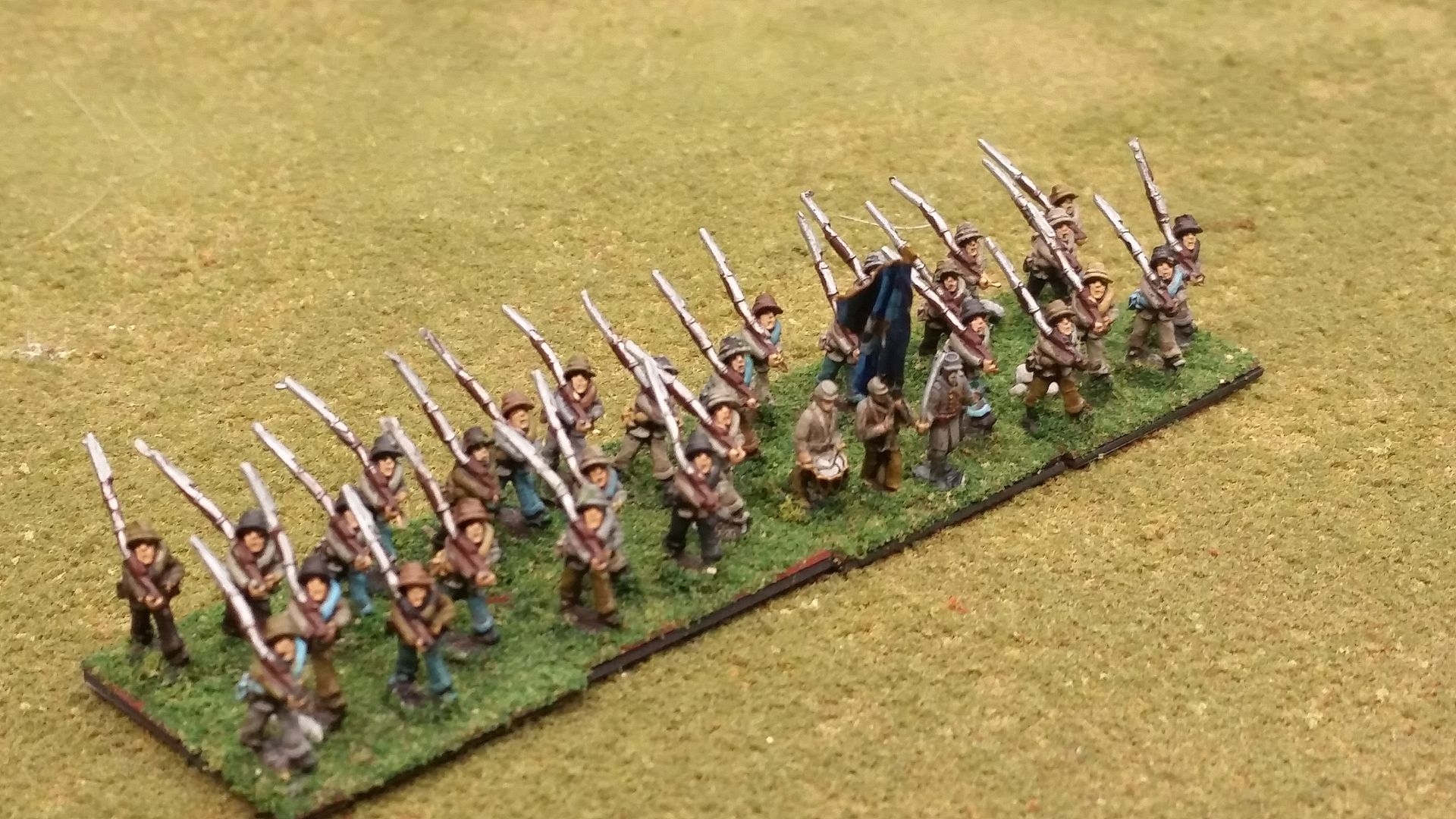 |
| Standard Size Unit |
I am eager to see what the author recommends for typical unit
sizes. Unlike the other two games where the Company and Battalion were
often independent fighting entities in ACW the regiment was the primary
fighting force and the lowest level of command where you would find unit colors.
 |
| Rebel Dismounted Cavalry take up position |
Also a bit unique to the ACW is the vast difference in unit sizes. Due
to the way the North and South replaced troops and commissioned units you can
have two regiments with a great disparity in size. The South tended to
add new recruits to existing units when possible whereas the North early on
simply created new regiments. It was not until later in the war that the
North began to assign new recruits to fill out existing units.
Attrition due to disease, field conditions,
and battle were fairly large which could quickly reduce the combat power of a
regiment.
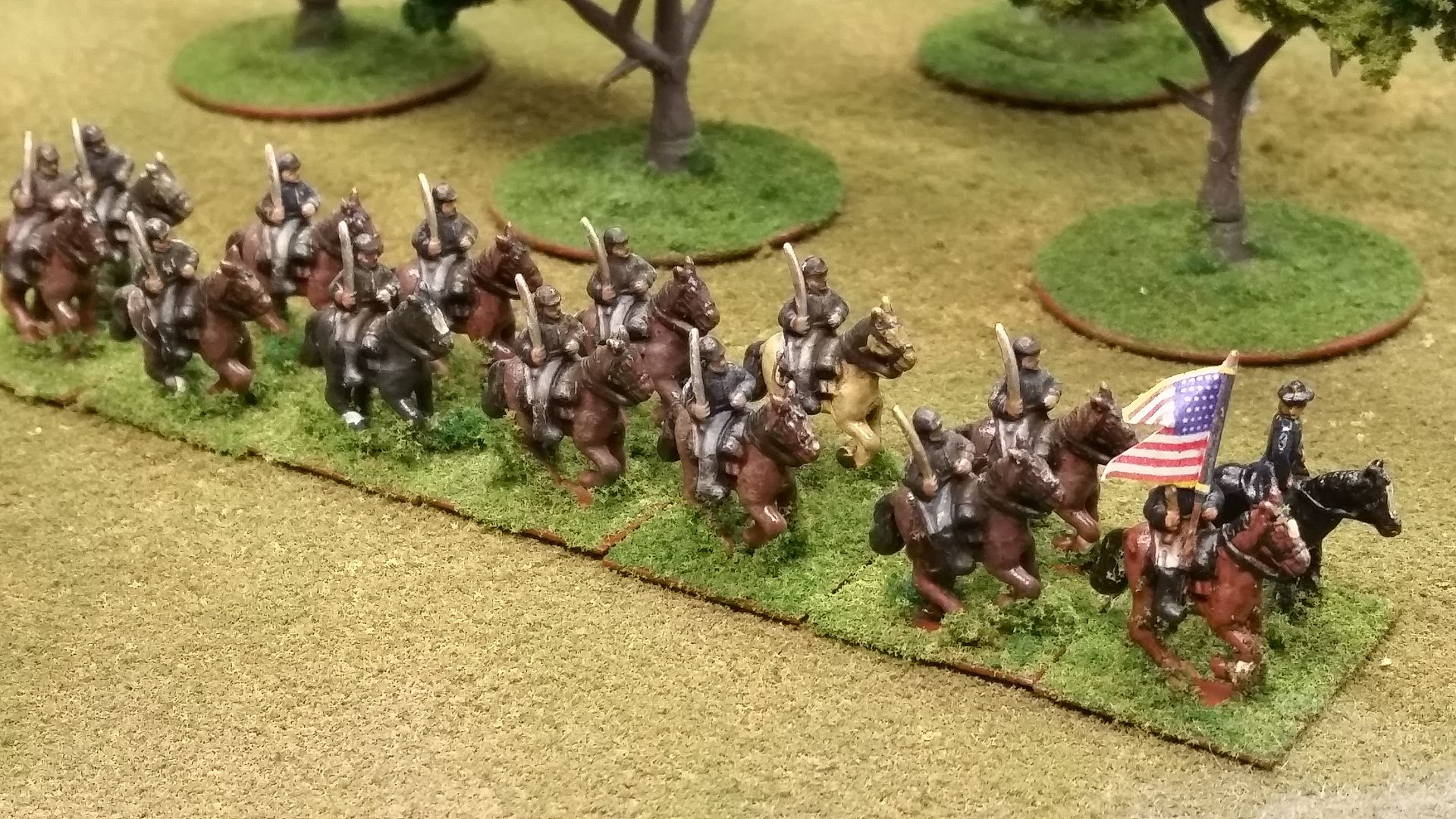 |
| Federal Mounted Cavalry |
Regiment typically started with 1000 men organized in two battalions of 5
100 man companies each, but many rarely went into battle with more than
500-600. It was not uncommon for a regiment to muster less than 200
combat effectives.
n the fall of 1862 the famed all Western "Iron Brigade" went into
combat at Brawner's farm with approximately 2400 men divided amongst the 2nd,
6th 7th Wisconsin and 19th Indiana. Three weeks later at the conclusion
of the battle of Antietam/Sharpsburg they could barely must 600 effectives for
the entire brigade.
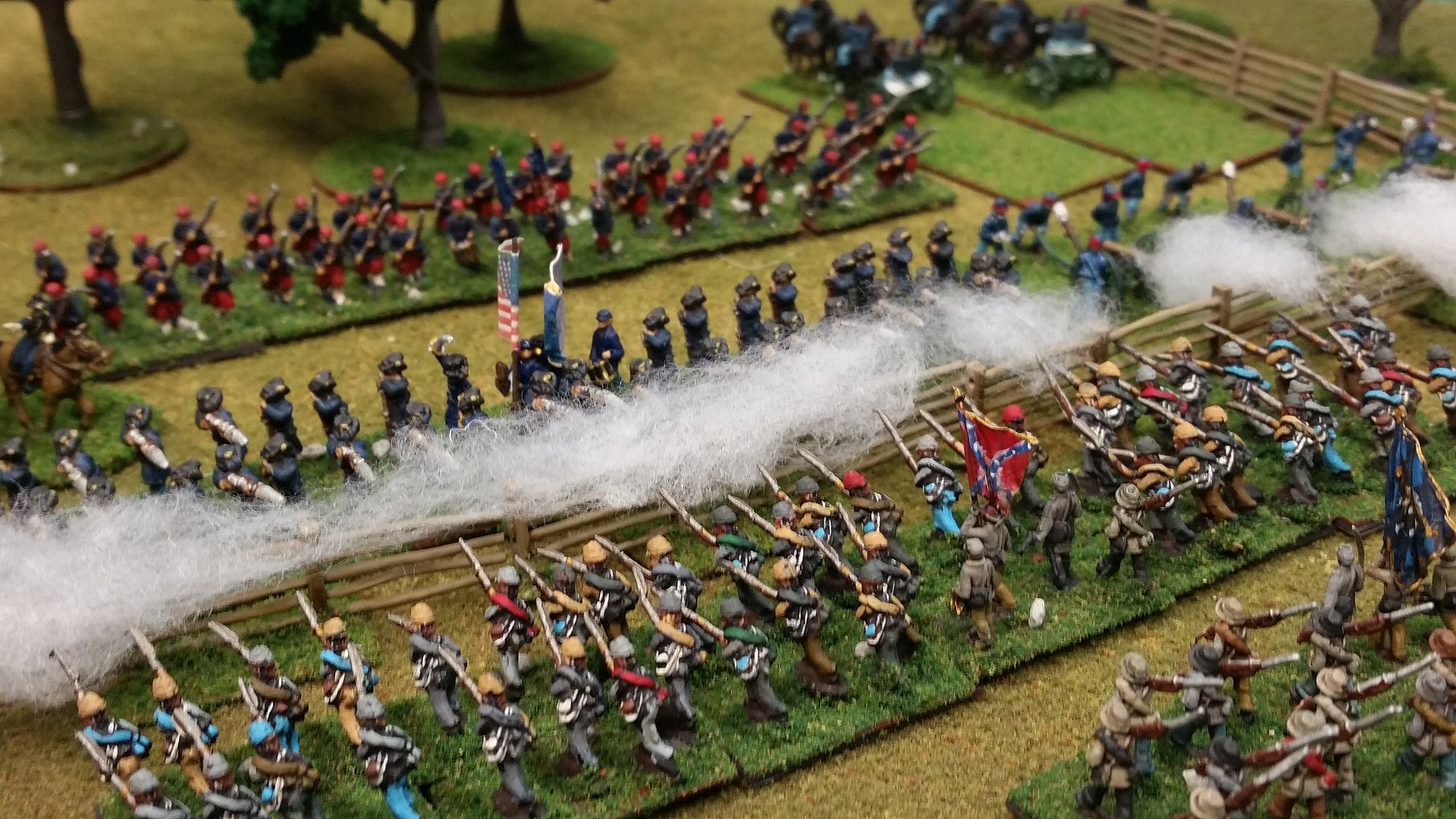 |
| Confederate Charge receives closing fire |
As a result it will be interesting to see how the Tiny, Small, Standard and
Large unit sizes work with Black Powder rules system in Glory Halleluiah.
I would also think that stats for units will
be tailored based on their historic performance which Black Powder can do with
the variety of special attributes that can be assigned to units.
I do not plan to rebase my collection. Currently my 10mm forces are
based 4 figures in line on a 1" x .5" bases. Like AWI my plan
is to basically double up stands to make a single square base instead of
remounting the figures. The magnetic sheets will come in handy for this
purpose.
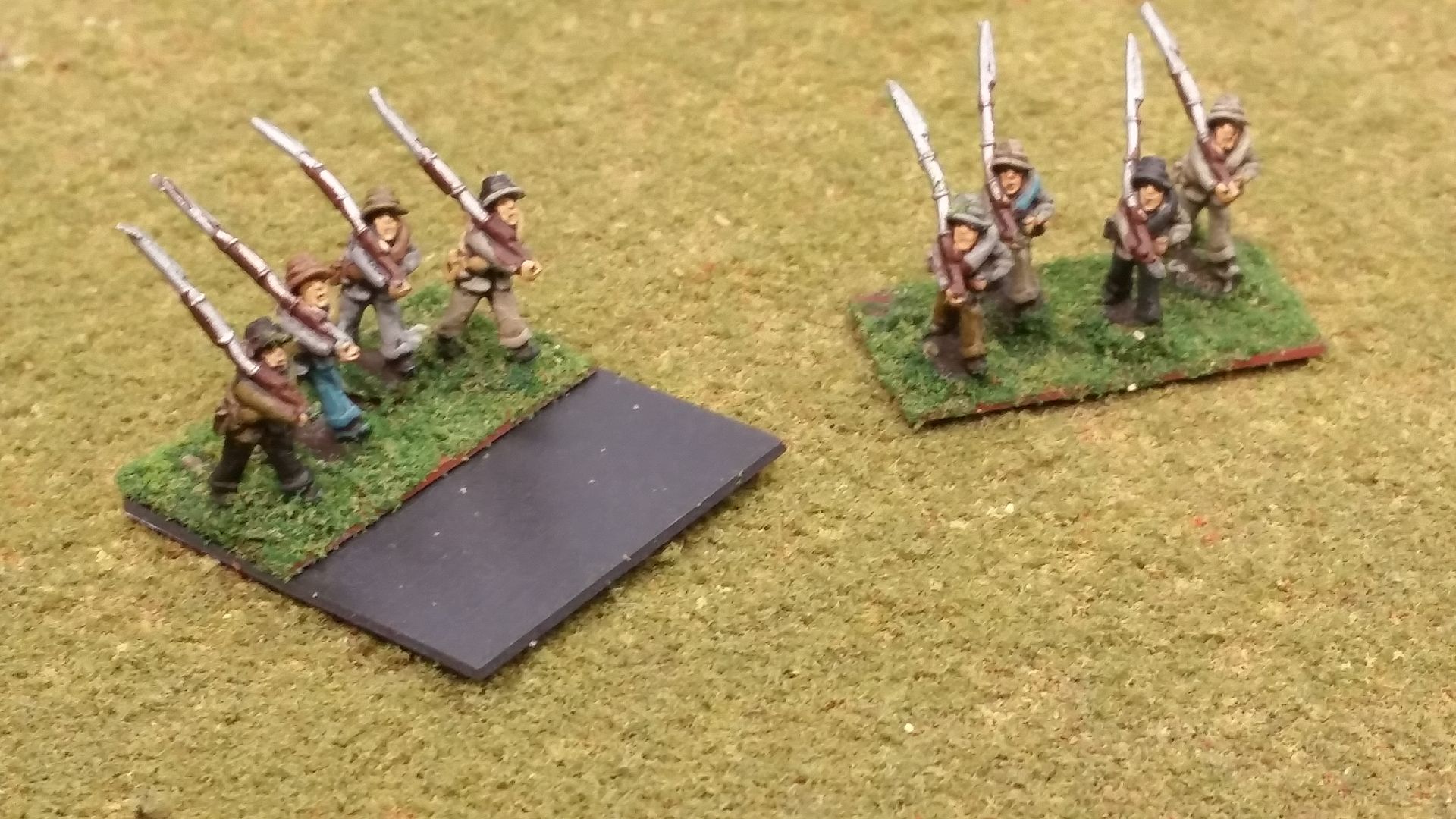 |
| 2 Stands with Magnetic base |
 |
| Stands combined to make one base |
Prior to seeing the new book my initial thoughts on unit size are as
follows:
Large-64 figs (16 bases) =8 stands (for larger scales) 650+ troops
Standard-48 figs (12 bases) =6 stands 450-650 troops
Small-32 figs (8 bases) =4 stands 250-450 troops
Tiny-24 figs (6 bases) =3 stands Less than 250 troops
If I were starting a new army in 28mm that would roughly translate to:
Large-32 figs
Standard-24 figs
Small-16 figs
Tiny-12 figs
I will be curious to see how my structure compares to what will be in the
supplement.
Hopefully we will all know
in just a couple of weeks.
























Enjoyable post thanks.
ReplyDeleteGreat post mate very interesting, just starting out with 28mm ACW here.
ReplyDeleteExcellent post.
ReplyDelete